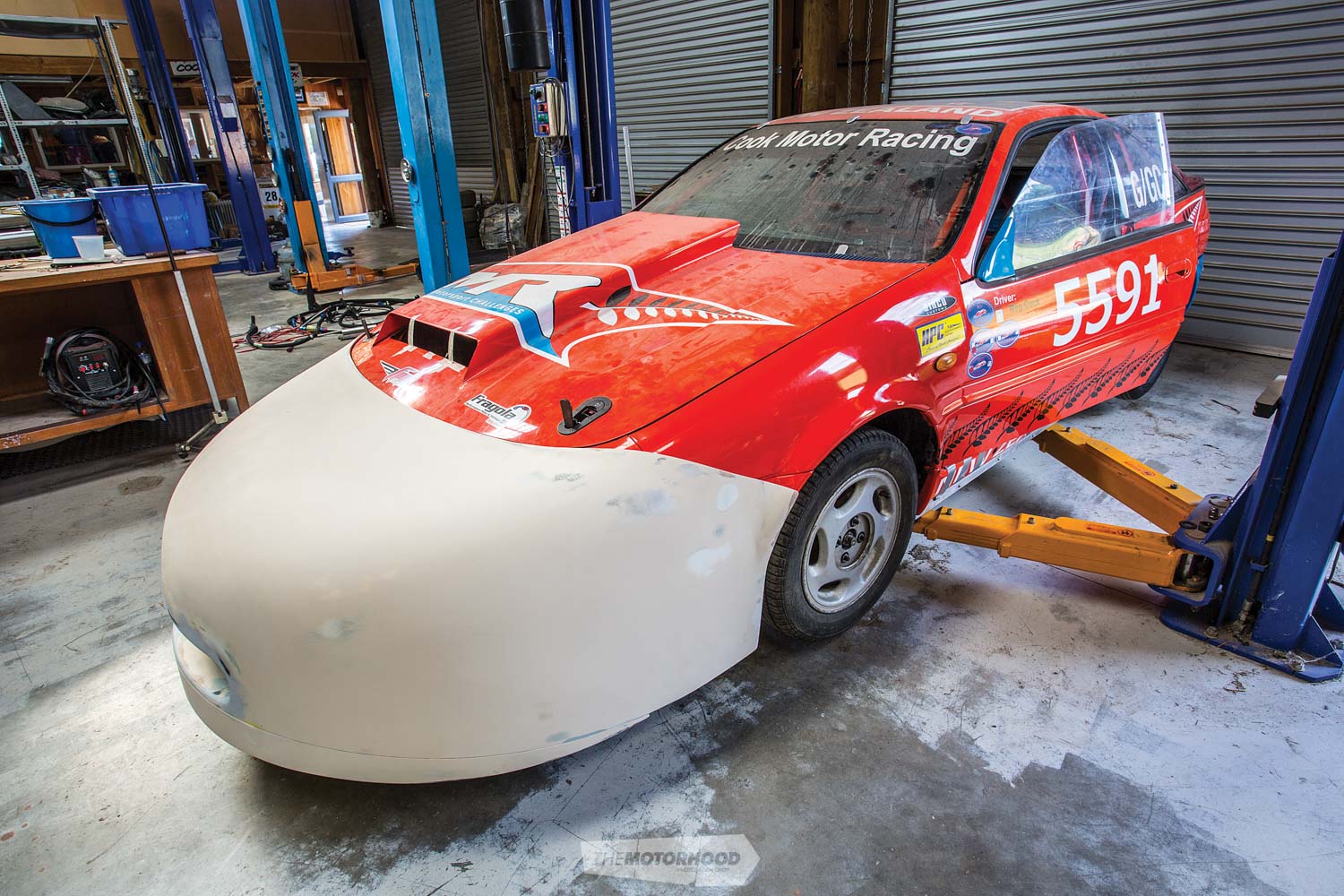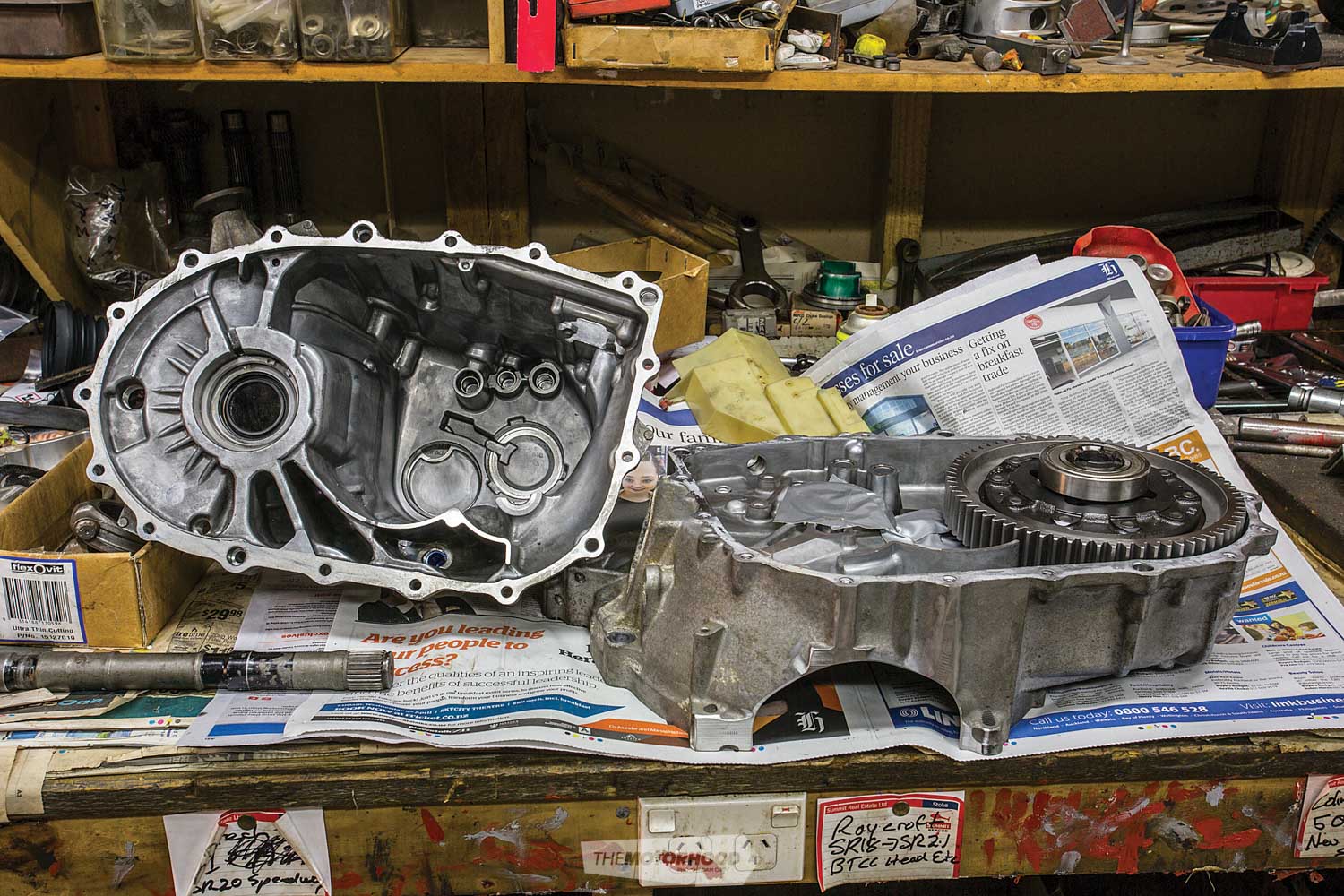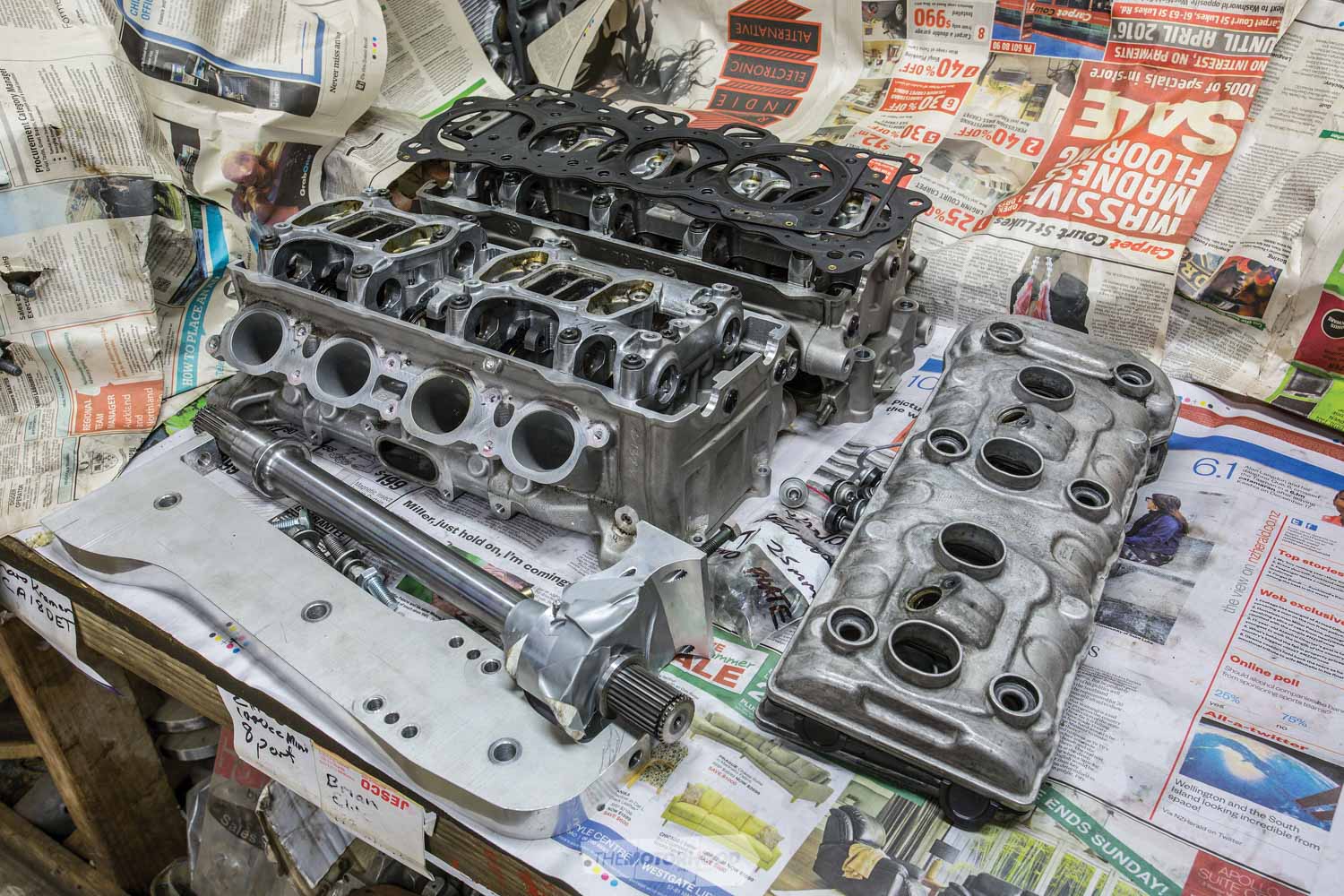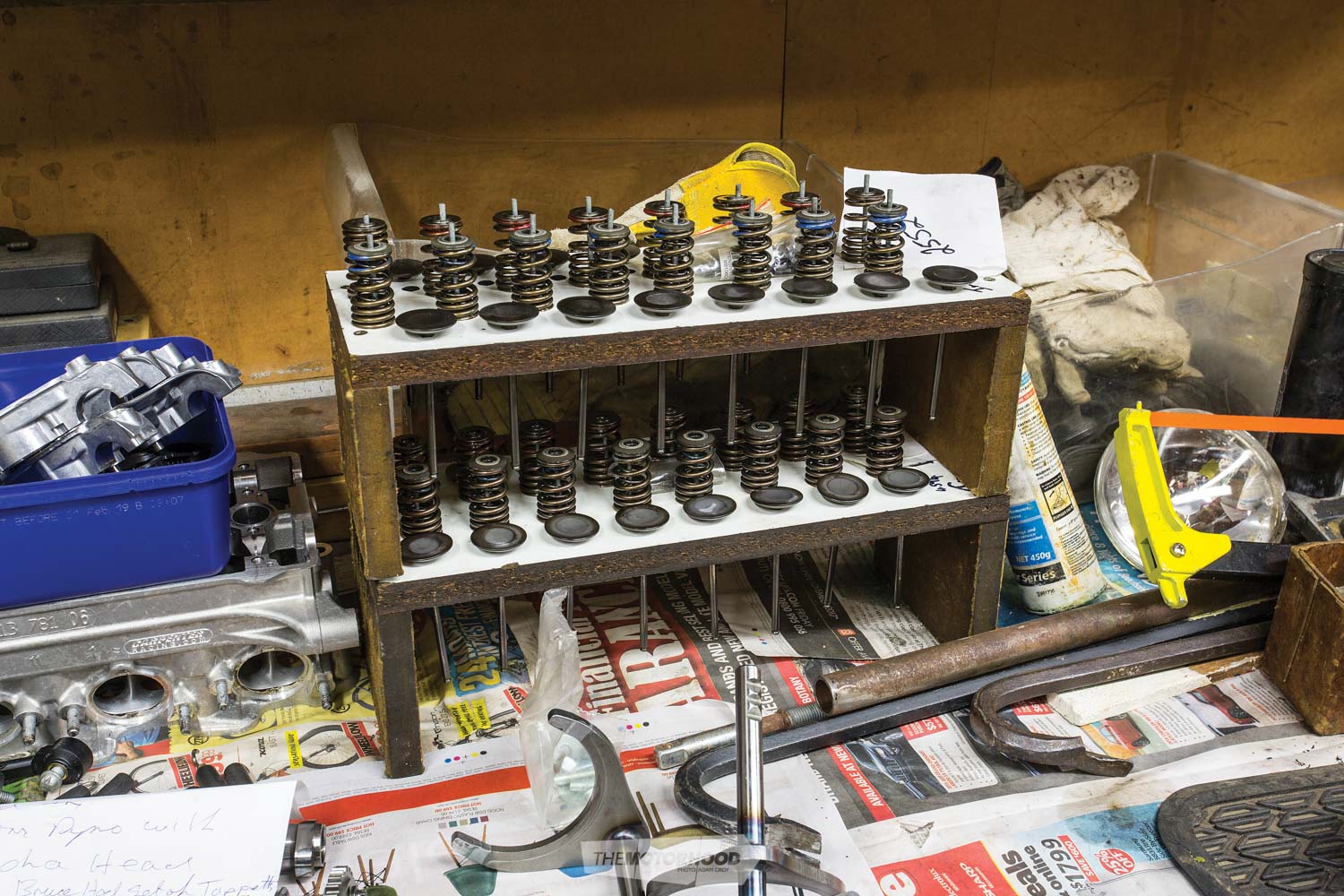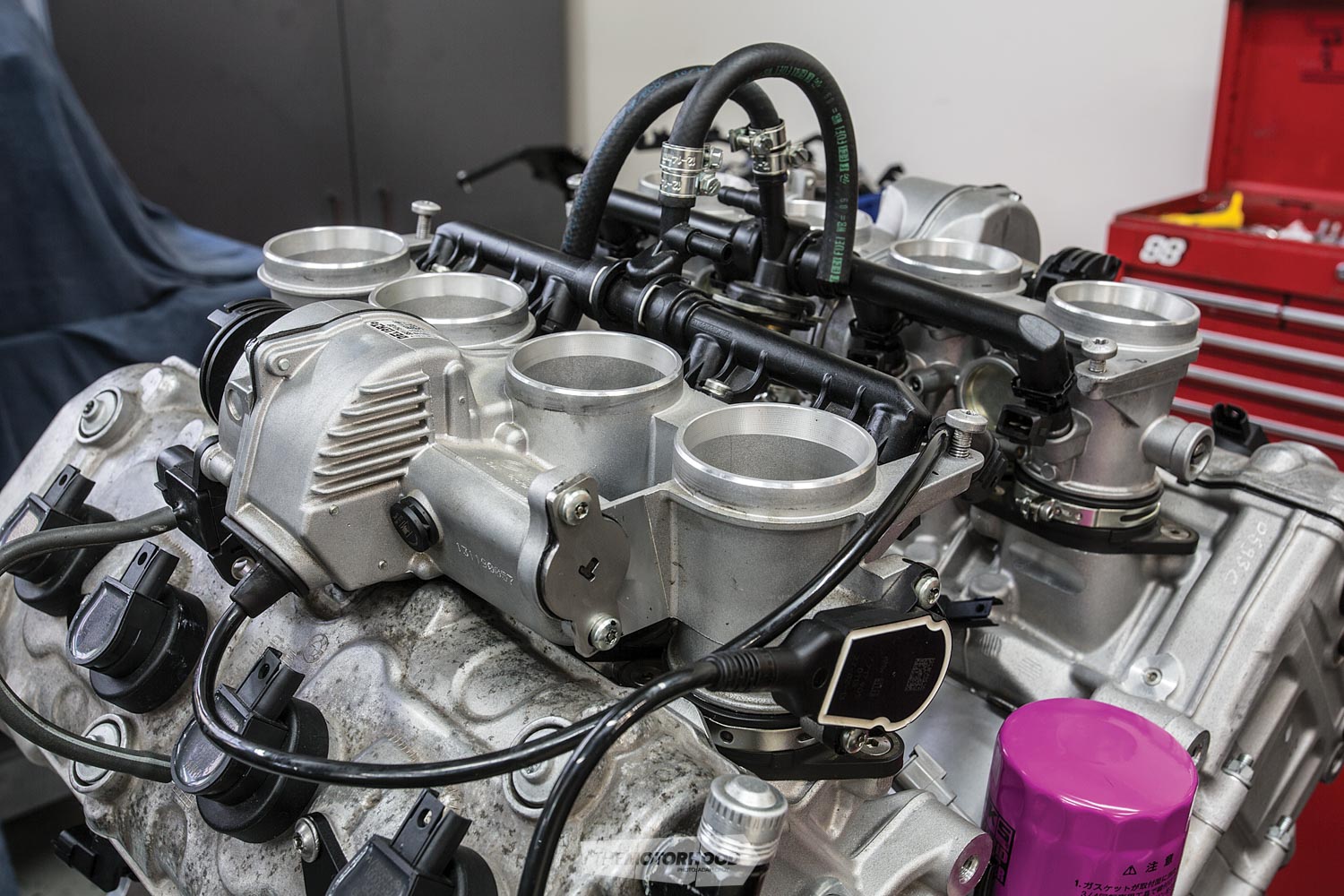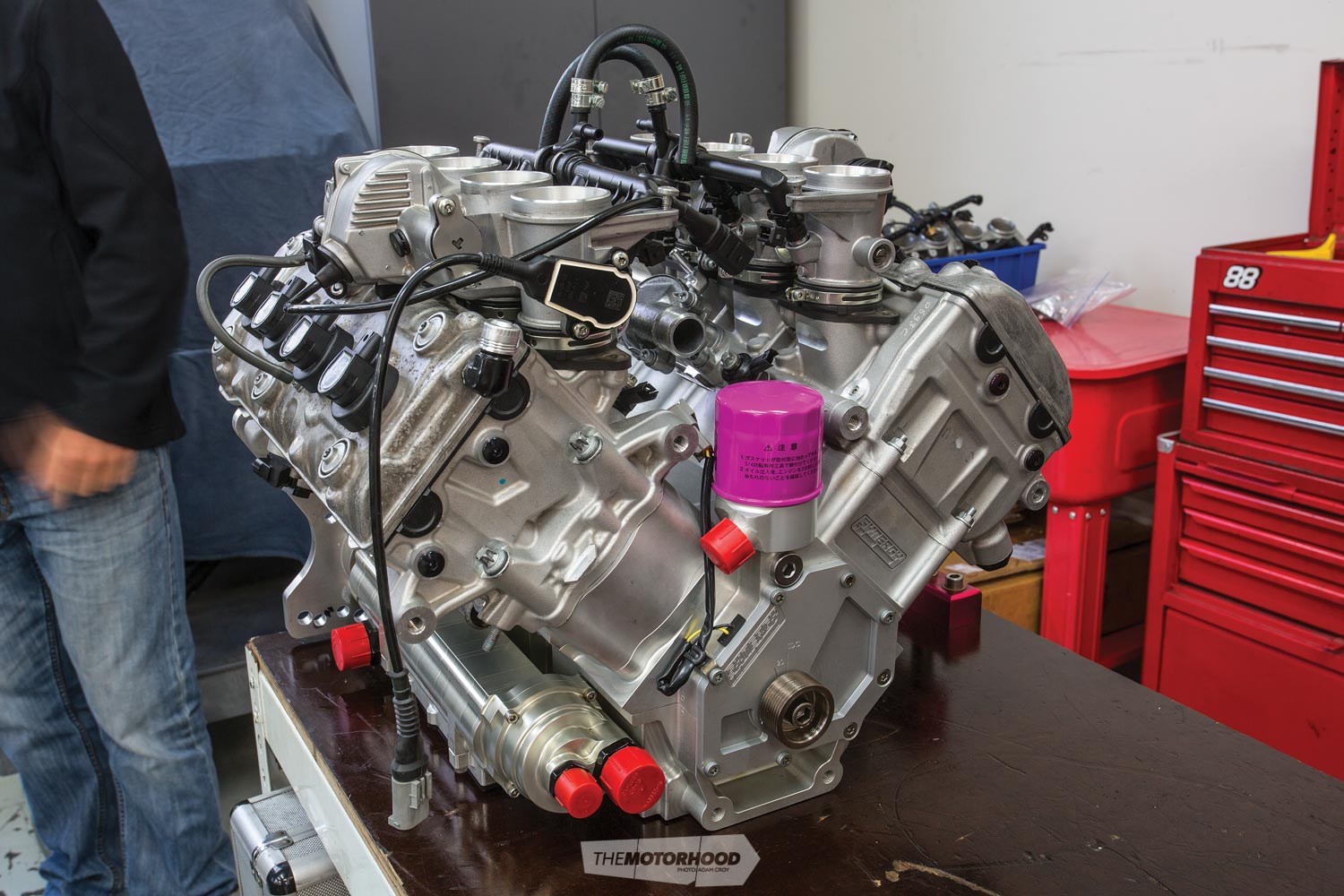Cook Motor Racing headed back to Bonneville this year with yet another set of records in its sights and with aims so ambitious that some very clever Kiwis had to knuckle down and build a bespoke 2.0-litre for the job

Typically, in this day and age, when we talk about someone building a powerful engine, it’s centred on extracting power by modifying a production power plant. But when you’re Reg Cook, a man who has spent his life developing factory-based 2.0-litres to obtain every last bit of power from them, eventually, you will reach a point where the only real option is to start with a clean slab of billet — especially when you are looking to go faster than any other 2.0-litre on the planet.
Reg’s relationship with the 2.0-litre is a long-standing one. If it’s a 2.0-litre worth knowing about, then chances are it’s seen some serious time on Reg’s dyno. But, on our recent trip to the South Auckland shop, hidden amongst chaotic wires and baling twine zigzagging the dyno cell, was not a 2.0-litre at all, but a 1000cc BMW S1000RR motorcycle engine serving as a dyno mule. The answer as to why lies in the basic 2×1000 math equation.

The gearbox for the NX coupe is a Honda K20 with custom dog-engagement ratios and custom chromoly driveshaft
When you venture down the rabbit hole of building a bespoke engine, there is no one in New Zealand more qualified to head that project than Simon Longdill of Synergy Power, the only man we know with a PhD in combustion-chamber design. Simon’s original 2400cc V8 shook the speedway midget world in 2009, before being outlawed. Since then, his 2400cc and 3000cc variants have been run in many different sports and production cars, including a popular Toyota 86 kit. For the past three years, Simon and his team have been working alongside Reg, taking what they learned with the 2.4 and engineering a completely new 2.0-litre variant from the ground up, with, as Simon explains, only a small handful of external parts that are interchangeable. The engines are now in the final stages of production, and the crew is just weeks out from sealing the container that’s bound for the Bonneville Speed Week in August.
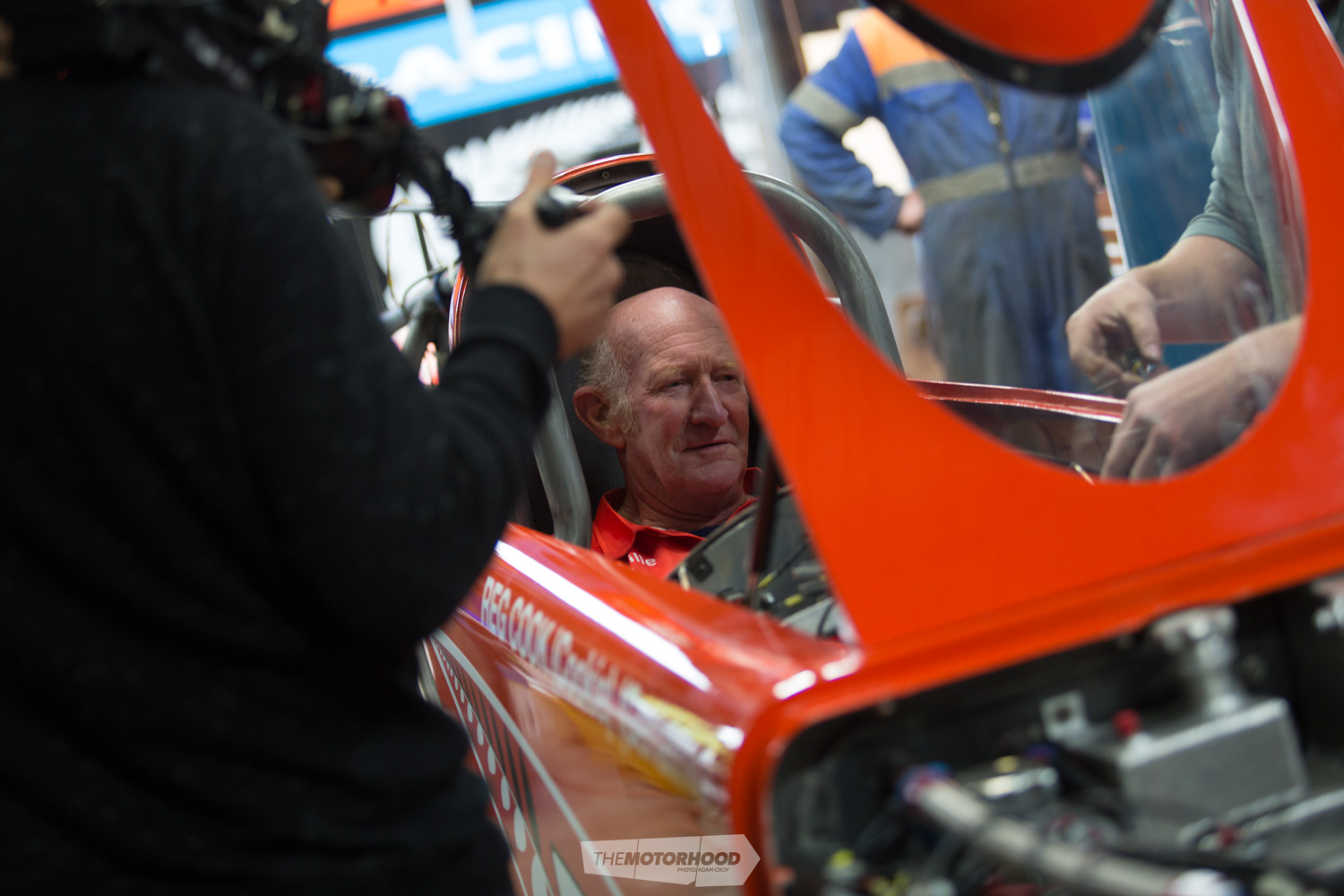
The Cook Motor Racing (CMR) team is no stranger to the salt, having attended many times with the NX coupe (‘COOKIE’), and last year it debuted ‘Wairua’, the team’s streamliner. The car set three records using a highly developed Honda K20 making 224kW and smashed the diesel world record using a stock Amarok 2.0-litre — running at 210mph (337.9kph). For 2017, both cars will run the Synergy engines, with the goal of setting six records and taking the title as the fastest Kiwi ever. The goals for the NX coupe are for it to be the first ever 2000cc naturally aspirated (NA) saloon to exceed 200mph (321.8kph), which would make it the fastest 2000cc NA saloon on the planet. The coupe will also try for four different class records, including bettering some of its own. The streamliner, however, has its goals set as becoming the fastest ever 2000cc NA in the world, and the first to break 300mph (482.8kph), plus two specific class records.
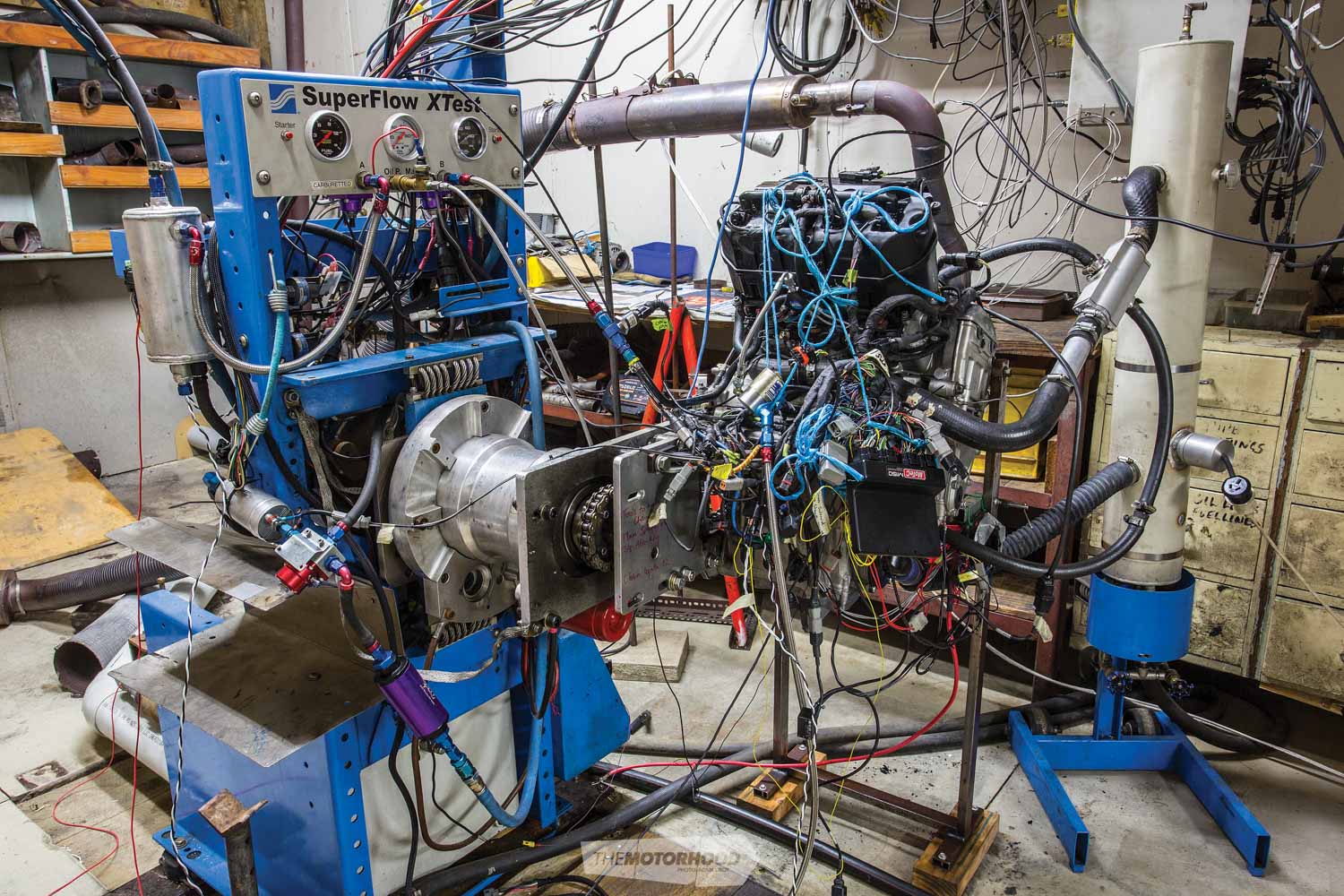
The team has built three of these engines, one for each car, each running the superbike cams and valves, while the third, a spare engine, is a more ‘standard’ S1000RR
To achieve these goals, the engines need to make significantly more power than the previous K20 — no easy feat when you’re talking in NA terms. But the Synergy 2.0-litres have done just this, with dyno runs showing 320kW and rpm running to 14,000.
The key to those outstanding figures is a pair of the most advanced motorcycle heads on the market, borrowed from the BMW S1000RR. BMW took plenty of F1 technology and crammed it into a 1000cc head — the results were predictably outstanding in terms of efficiency, reliability, and rev-ability. The biggest difference to these heads over a conventional four-valve set-up are the finger followers and offset camshafts. No shims or buckets are needed, which reduces the reciprocating valvetrain weight by upwards of 50 per cent. Having the valve offset also allows for a flatter-shaped combustion chamber to maximize the valve’s efficiency. To further increase the performance of these heads, they use off-the-shelf Superbike World Championship–spec cams and other valvetrain components, which the Synergy engines will also run.
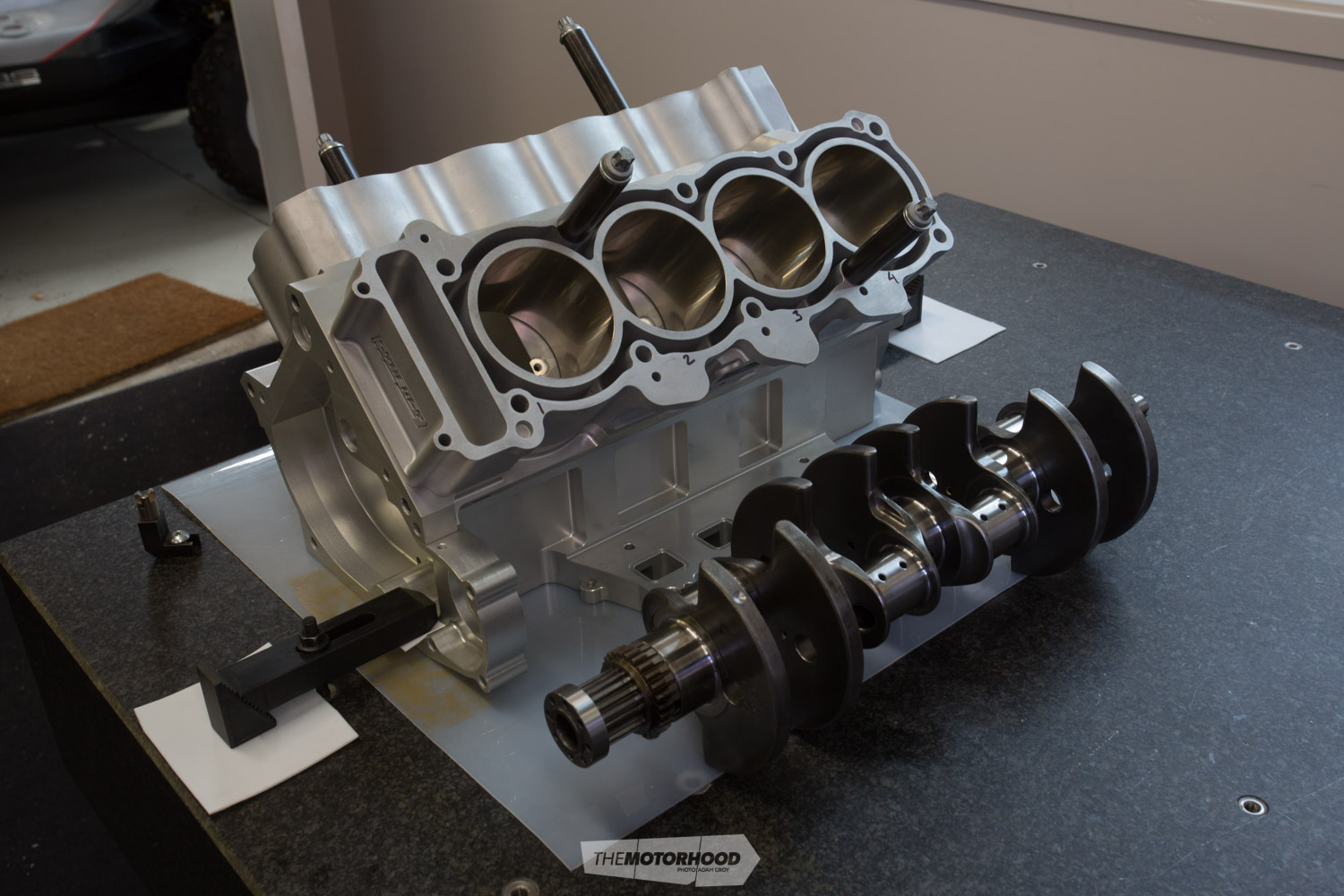
The blocks are machined here in New Zealand, a process that takes around 60 hours of machining per block, before the cylinder walls are Nikasil treated. Parts like the oil system have been built into the block using a custom six-stage Daley dry-sump pump, which is driven directly off the crank. The system has four scavengers, as each pair of cylinders uses a completely separate oiling system to allow better control and lower friction — an enemy of power in an NA motor. Simon tells us that the block uses many of the design elements from the BMW four-cylinder, but with a wider bore and shorter stroke more aligned with current MotoGP engine technology. Such a short stroke did present problems with combustion-chamber design, to ensure no interference and a very high 14:1.1 compression.
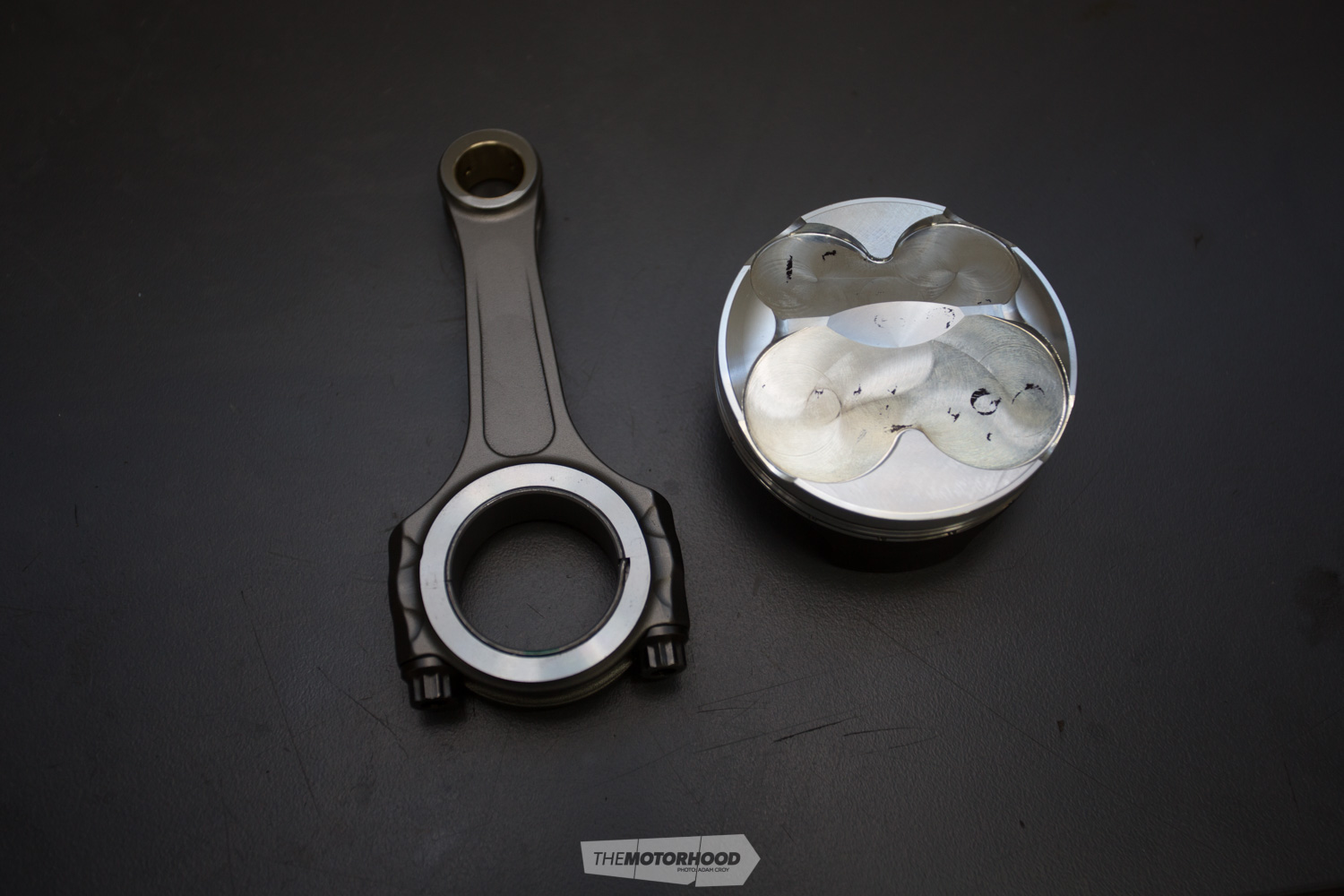
The pistons have been built in conjunction with CP Pistons in California, along with the rings. The same can be said for the rods and crank, as producing such components here in New Zealand, while possible, can be a very costly and time-consuming process, as no one company offers a complete service, whereas these partners have complete in-house processes.
When it comes to development of any components, having that mule BMW S1000RR on the dyno has slashed time and cost. Everything from header design to intakes has been trialled to get the maximum performance. Being only a four-cylinder, the prototyping costs are halved, as is labour to change parts over. The power gains (or losses) are then simply doubled, although Simon did say the conversion is actually slightly over double due to the Synergies’ reduced friction. The team has trialled a serious number of header and exhaust combos, settling on a pair of eight-into-four-into-two-into-ones built by Sinco.
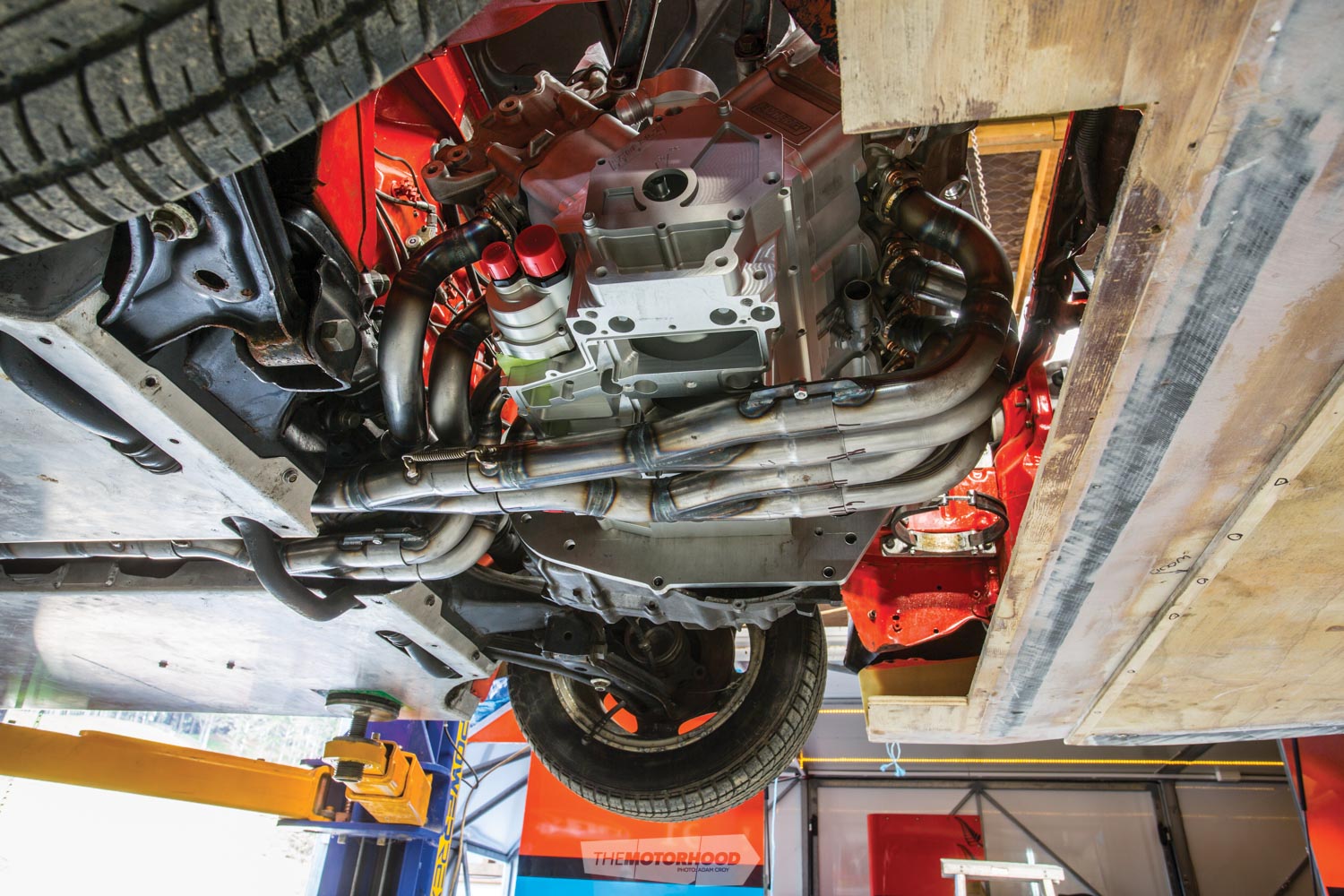
Sinco has been behind the header work. After building a few prototypes for the motorcycle engine, it was found the four-into-two-into-one was needed
The intake system is an all BMW affair, with the factory throttle bodies, which run two injectors per cylinder, four primary injectors situated below the butterfly, and secondary injectors above the trumpet. This allows the team to tune the MoTeC in sequential fire, ramping up to 89 per cent on the secondary set at top rpm. The BMW intake plenums are so advanced that these will be retained, including their variable intakes and drive-by-wire. Even the injectors are the factory Bosch Motorsport items.
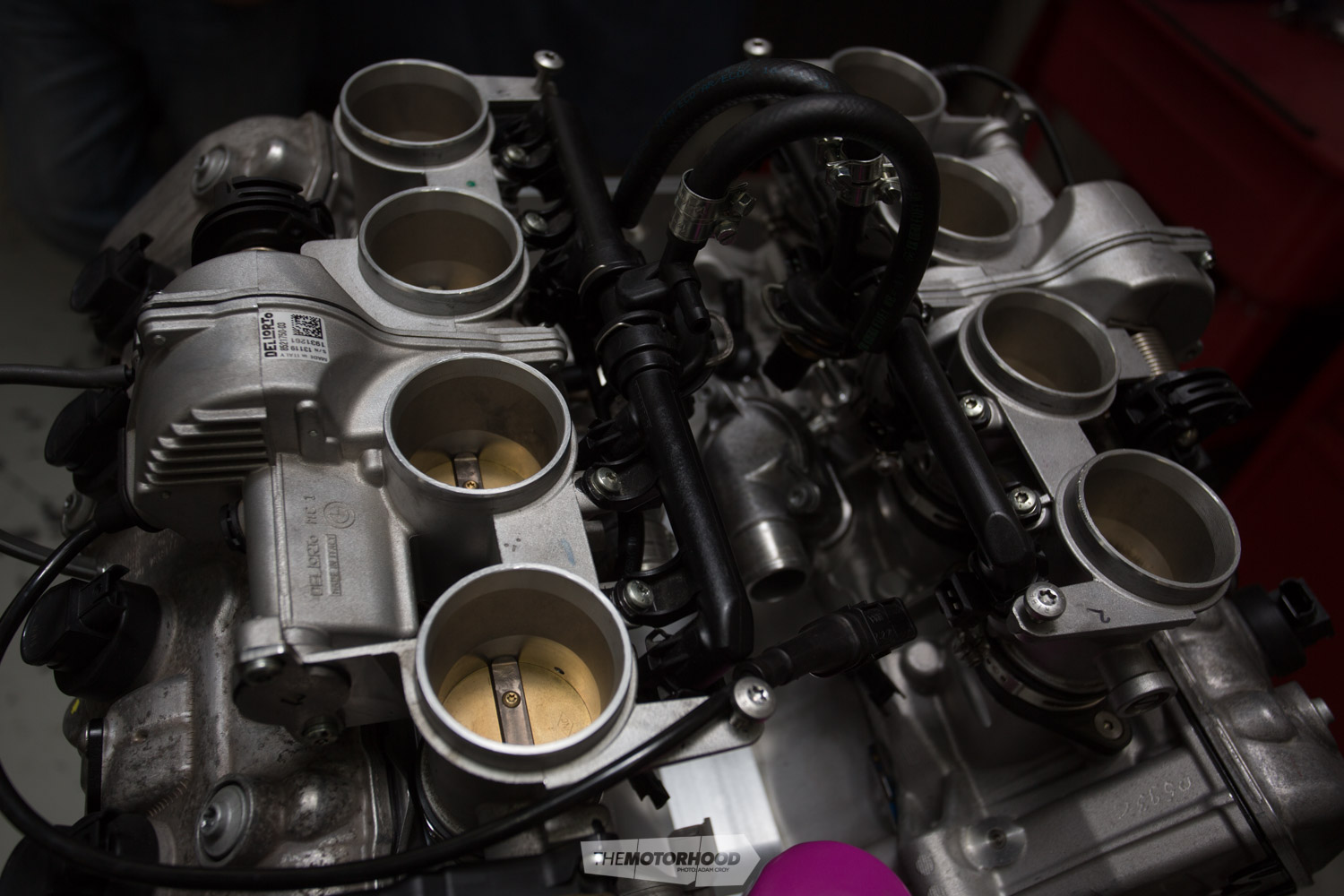
The V8 retains the factory S1000RR throttle bodies and intake plenum — which is a very trick piece of kit — including variable-length velocity stacks and a pair of injectors per throttle body. These will be tuned sequentially via the MoTeC M150
The electronics package is based around MoTeC power-distribution modules (PDMs) and MoTeC’s latest and most powerful ECU, the M150. The wiring looms are motorsport grade, built to withstand the harshest environment you’ll find people racing, anywhere in the world.
It’s been three years thus far, with three Synergy 2.0-litres completed, one each for the NX coupe and streamliner, and one spare, with factory heads and cams. Weighing in at 80kg, they are extremely light and very compact, with a super-low centre of gravity. That compact size comes in handy when slotting it east–west into the coupe, along with the six-speed dogbox based around a Honda K20 gearbox. Fitting it into the streamliner is a little more involved, with a billet bellhousing and rpm reducer connecting to the eight-speed Wiseman land-speed-racing transaxle. The reducer will convert the rpm to speeds the Wiseman can handle, as it was never designed for 14,000rpm. The CVs will also be converted to greaseless items, as, last year, the CV boots disintegrated at 200mph, and Reg is planning on 300mph this year!
At the end of last Speed Week, both cars spent time in the Darko wind tunnel, and the results for the streamliner Wairua were nothing short of amazing — it actually showed the lowest drag at 200mph of any streamliner tested there to date. But the NX coupe was something that needed work, and the team has addressed this with a large front nose cone, which sits over a metre forward of the actual bumper, and a large rear diffuser. Ahead of Speed Week 2017, both cars will return to the tunnel to test the modifications before they hit the salt.

Reg believes that racing on the flats is now on borrowed time, so he is trying to make the most of it before racing will no longer take place there. He is currently assembling a team of extremely talented Kiwis, all hell bent on entering the record books with a Kiwi-built car and now a very special Kiwi-built engine. Godspeed boys, do us all proud, and show the world what can be achieved in a couple of very small workshops in South Auckland.
UPDATE: Testing times on the salt
“No one said coming to The Salt was [going to be] easy.” says Reg Cook. The CMR team can confirm it isn’t after the first three shake-down runs with its 2.0-litre V8-powered NX coupe ended with gremlins found in the car. First the ECU cut out, then bonnet scoop flew sky high, and finally the exhaust blew off.
A top speed of 185mph (297.7kph) was recorded, heart-breakingly close to the 2000cc/ Gas Comp Coupe record. Then the following two runs saw the first gearbox “Chernobyled”, as Reg puts it, and the spare the team transplanted just didn’t want to play ball. That no doubt made for a disappointing end to Speed Week, as the team had to retire the car until the upcoming USAFRA meeting.
On the other hand the CMR streamliner, known as Wairua, managed to click over the current 252mph record with a run at 260.779mph (428kph) and backed it up the following morning for a new record.
This article originally appeared in NZ Performance Car issue No. 248 — click the cover below to get your grubby mitts on a print copy





